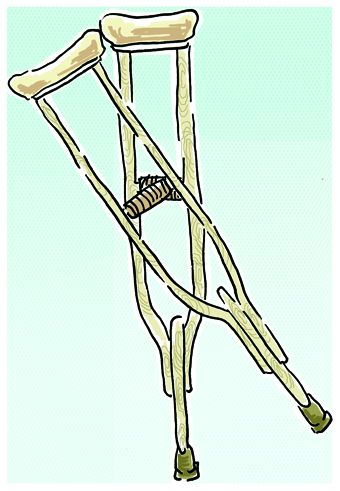As of Jan. 13, India had not had a case of polio in a year. The country was a major centre of polio infection as recently as 2009, when its 741 cases accounted for nearly half the world’s infections. The number of cases dropped to a record low of 42 in 2010.
Last year saw only one case, in early January — a two-year-old infant in the Howrah district of West Bengal. The state of Uttar Pradesh, described by UNICEF as the “epicenter of almost all poliovirus outbreaks in the country,” has not had any reported cases of polio since April of 2010.
This abrupt change of direction has been chalked up to the redoubled efforts of the Global Polio Eradication Initiative, a collaboration between the Indian government, international authorities like UNICEF and the World Health Organization (WHO), and charitable organizations such as Rotary International.
Under this program, vaccinators are sent out in “pulses” to inoculate the country’s nearly 172 million children under the age of five. Each round of vaccinations sees five million children treated by mobile clinics in just Uttar Pradesh, Bihar and Mumbai.
Polio, short for poliomyelitis, is a disease caused by the wild poliovirus, which is transmissible through direct person-to-person contact, as well as through contact with infected mucus or feces. Many of those infected experience temporary symptoms, such as diarrhoea, or no symptoms at all. However, permanent paralysis can result if the disease begins to affect the brain and spinal cord. Polio can cause death if breathing muscles become immobilized.
The virus can be effectively prevented through immunization, especially of young children, who are most vulnerable to infection. Because the virus cannot survive long outside the human body, it is possible to eradicate the disease from a well-vaccinated population. One of the virus’s three strains, Type 2 wild poliovirus, was completely eradicated in 1999.
Polio has been infecting humans for a very long time. An Egyptian stone carving from 3,000 years ago is thought to be the oldest historical depiction of paralysis resulting from the virus. It was a particularly feared disease in the early half of the 20th century, when it was a worldwide epidemic.
During his term, US President Franklin D. Roosevelt founded the National Foundation for Infantile Paralysis and declared a “war on polio,” which culminated in the development of Jonas Salk’s vaccine. Shortly thereafter, polio was all but eradicated in the industrialized world.
In 1988, the Global Polio Eradication Initiative (GPEI) was founded to combat the disease. The GPEI is the largest ever peacetime mobilization of people — involving more than 20 million volunteers. Since 1988, rates of infection are down by 88 per cent. By 2002, three WHO regions had been certified polio-free. Only four countries are still classified as “endemic” by the WHO: Afghanistan, Nigeria, Pakistan, and India.
India will be officially removed from the list as soon as the WHO has finished analyzing lab results. Now that the rate of infection has been reduced so drastically, Indian officials plan to treat every case of polio as a public health emergency. “We are excited and hopeful, at the same time, vigilant and alert,” said Shri Ghulam Nabi Azad, India’s minister of health and family welfare.
In an online video, UNICEF’s polio ambassador, Amitabh Bachchan, congratulated the people of India, but warned against complacency. “As long as there is polio anywhere in the world, it remains a threat everywhere in the world,” he said, “and polio certainly remains a threat to India. We must continue this fight until it is over.”
illustration by kara passey


